The original disappeared in World War II.
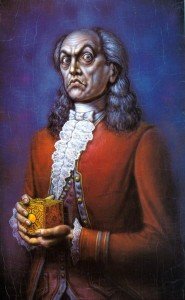
(Biography excerpted from "Tucker's Encyclopedia of Mass Murderers")
At the height of his career,
Paris was besieged by scandalous
multiple
disappearances of noteworthy individuals, a number of whom had
purchased
LeMarchand's puzzle boxes. Suspicions, though
unconfirmed, fell upon the sculptor /
architect,
especially inasmuch as LeMarchand's apprentice, the son of a respected
clock maker, was one of the first to disappear.
| Philip LeMarchand,
at the
height of his career, painted this self portrait allegedly using not
oil,
but human fat as it's base. The original disappeared in World War II. |
 |
Amidst this notoriety, LeMarchand fled Europe without selling his home. Apparently certain that the authorities were closing in on him, LeMarchand discarded his already floundering career. The exact charges which would have been brought against him are unknown, for most legal records regarding LeMarchand were either expunged after his disappearance, or destroyed in the early part of World War Two. LeMarchand, like Moses the lawgiver found his name struck from most records.
|
We
do know that he was educated at the Academie
Royale de Pienture et
Sculpture
in Paris in the early seventeen hundreds, that he was a Freemason,
that he moved to New York to pursue "more
loftier pursuits than the
mundane
and oppressive tedium of a drafting table,"
that he later
entered a
competition
to design the President's House, and that he had a devoted interest in
the occult.
|
|
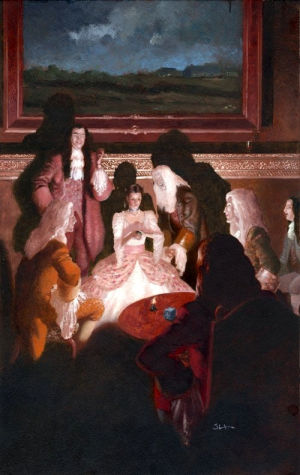
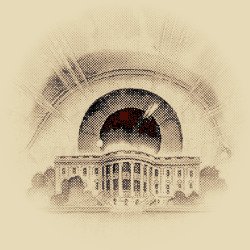
Until now, the best references we had on LeMarchand and his works were two articles by Valentina Sprague ("Architect of the Damned," Pentacle, June 1967; "Leviathan's White House" Pentacle, February 1975) one of which posed the question of what would have happened had LeMarchand been commissioned as the architect of the White House, since this would have followed the creation of his puzzle boxes. The other article was an attempt to re-create the events which brought Leviathan's material into LeMarchand's possession. Beyond this the only major surviving references are a brief mention in Bolinger's Encyclopedia of the Occult (1946) and a chapter on his architecture in Kaufmann's French Architecture of the Eighteenth Century (1936), which reveals little biographical information about the man himself, but does contain numerous illustrations of LeMarchand's buildings which no longer exist themselves.
Late Architecture

It is known that LeMarchand did live for several years beyond his disappearance from French and British artistic and social circles. He made a living by selling his puzzles throughout Europe, at a substantial decrease to what he was receiving for them at auction during the height of his fame. He supplemented this income by returning to architectural design. This we know from the completion dates of buildings ascribed to him. These buildings, numbering about thirty, are all believed to have been larger versions of his puzzle boxes.
The
majority of these structures, again, are
believed
to have been destroyed during the World Wars. Others met their ends in
suspicious blazes, and in order to make room for newer buildings. We
also
know that a few of his architectural designs were not carried out until
well after his death. The world famous Carrbord
Hansen's Disease
Center
is one of these.
.
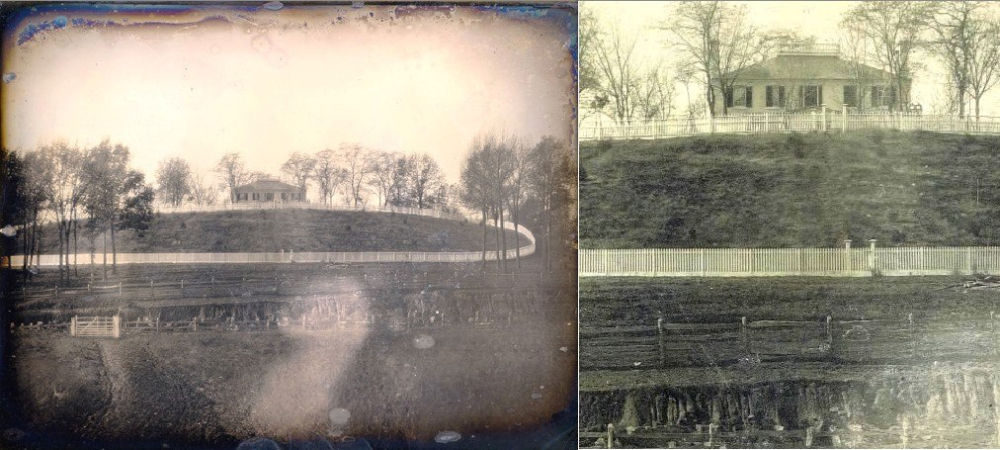 |
| LeMarchand
scholars have proposed that this half-plate daguerreotype of a country
estate in Manhattan was taken by Philip LeMarchand himself in the late
1790's using techniques unwillingly taught to him by Francois Tiphaigne de la Roche. If this theory is correct, it would make this the oldest photograph ever taken. LeMarchand instructed Dr. Tiphaigne to keep the method a secret, but Tiphaigne later wrote a fictional book on the subject called "Giphantie." In the story, "the people of an imaginary wonderland" could fix perfectly reflected images onto a canvas coated with a "sticky substance." The canvas would not only represent the mirror image, but after it dried, the image would remain. |
|
Eighteenth Century New York City Map |
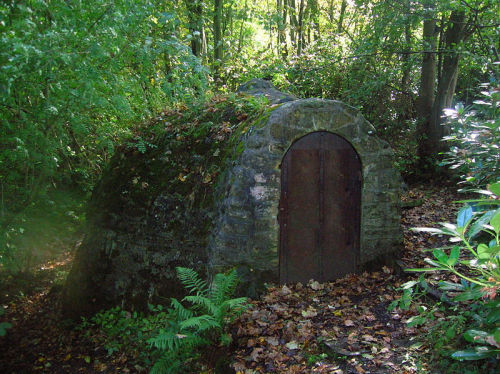 In 1797, human remains were found on Philip LeMarchand's property. Authorities raided the ice house on LeMarchand's small estate located near the stream known as Minetta Brook. 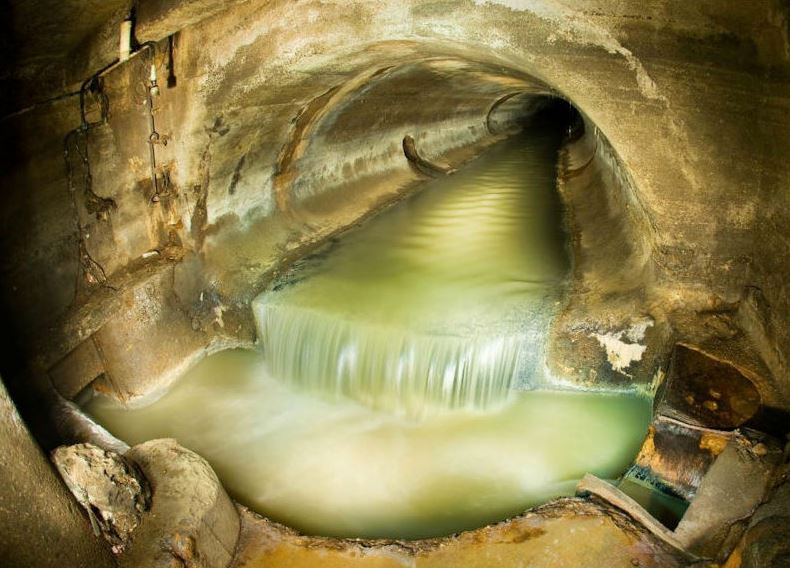 Neighboring farms reported unnatural fluids and odors contaminating the
brook from a stream which ran out of the ice house. Local Native Americans called the brook "Mannette," which was translated as "Devil's
Water." The Dutch called the water Mintje Kill, meaning small stream.
Debate continues on whether the creek still exists as an underground
stream.
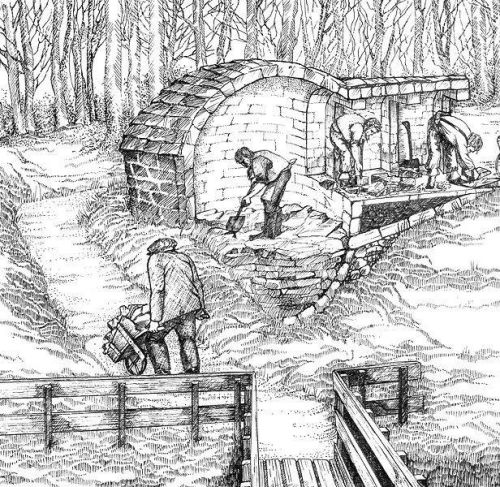 The raid uncovered between 12 and 20+ bodies and stores of human fat. LeMarchand's three servants reported their Master away, attending to business abroad. 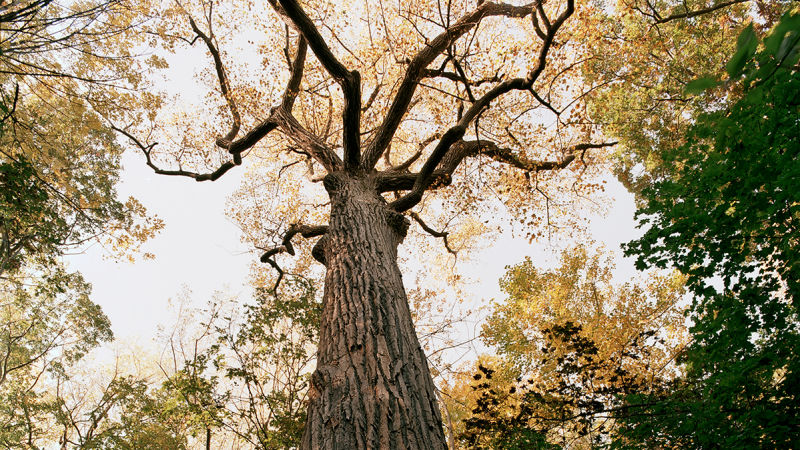 The servants were hanged by the authorities beyond the shallow ravine between LeMarchand's farm and Minetta Brook on a great elm tree which became known as the Hangman's Elm. At 340 years old, it is the oldest tree in New York City. 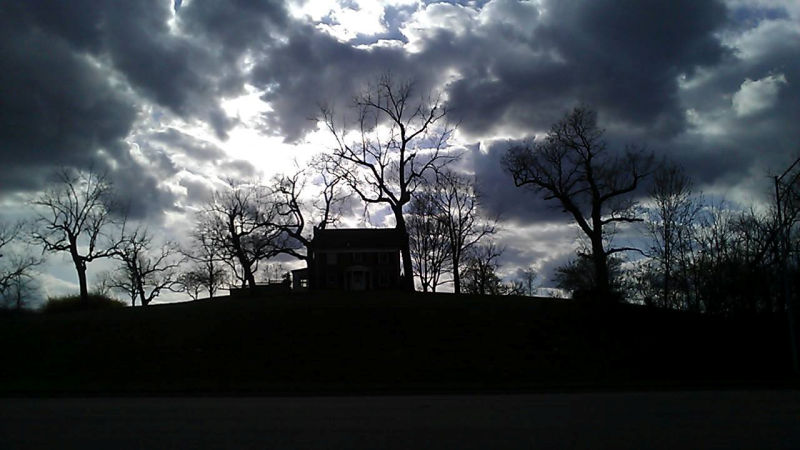 The Common Council of New York burned down LeMarchand's home to the ground as an "abode of evil." The land was used for a new potter's field, or public burial ground used mainly for burying unknown or indigent people when they died. The cemetery was closed in 1825. 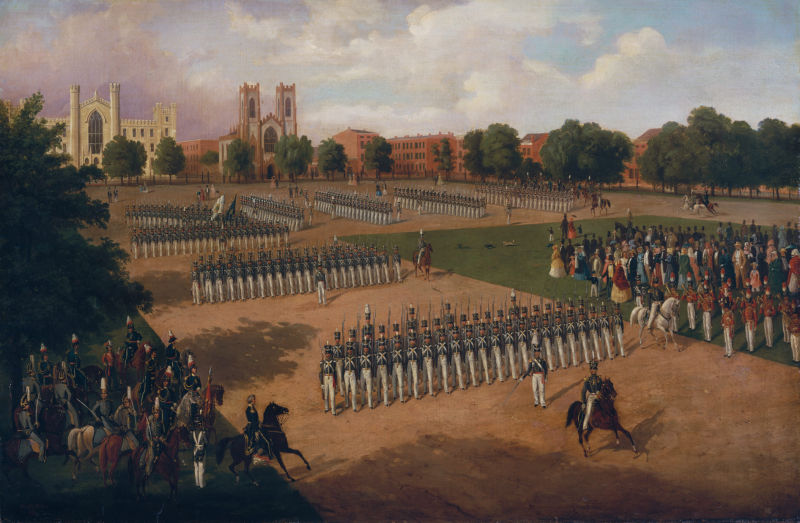
To this day, the remains of more than 20,000 bodies rest under Washington Square Park.
Legend also has it that the Potter's Field was the site of public
gallows during the same time period. In 1826, the burial ground
was turned into a military parade ground.
|
|
|
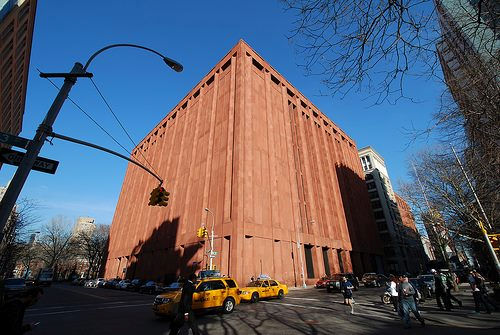 The Final Years
The Final Years
There are surprisingly few documents
in
existence
to provide us with this missing information. Reportedly the de Moret
family
purchased the contents of LeMarchand's New York house, where horrors
depicted
in his journal were committed. The house itself was razed to the ground
as an abode of evil, and the site remained a vacant lot for a number of
years. The site, at 70 Washington Square South, now houses New York
University's Elmer
Holmes Bobst Library,
which strangely enough, structurally
represents
one of LeMarchand's boxes.
LeMarchand's
Legacy
It is believed this genius constructed more than 270 of his puzzle boxes before he vanished. These boxes change hands rapidly, as is expected, though there are a few collectors, who are interested in the boxes as objects of admiration, and have no interest in working their wonders.
One of LeMarchand's boxes has even appeared recently on the album cover of the goth rock group, The Cult of Joseph, showcasing a release entitled Chain of Souls. The agency representing the band recently announced that the band's tour bus had mysteriously disappeared between engagements in Muncie and Gary, Indiana.
As to whether or not LeMarchand made his peace with God, that is the biggest enigma remaining. Who knows what the consequences of solving it will bring? We know that in order for LeMarchand to create his boxes, he needed human fat, lots of it, so therefore he had to murder a great deal. This he must have done quietly, taking only people whose absence would go unnoticed, for we have no records of any European manhunt during the time he returned to France.
LeMarchand
was 94 years old when he checked
into L'Hotel D'Arnais. He was never seen checking out. When the hotel
management
finally entered his room they found it empty except for the
furnishings,
and one of LeMarchand's own boxes which sat on the floor amongst a
great
deal of blood. LeMarchand's final exit.
Or was it? For all we know, this could be the scene of another one of LeMarchand's offerings to the Cenobites. He, himself could have slipped quietly away, dying in obscurity for all we know. During his time there was much speculation. No obituary ever appeared for him, and reported sightings of him, including back in the Colonies, became nearly as frequent as today's Elvis sightings.
We may never know what happened to
Philip
LeMarchand.
Any journals that he may have kept following his flight from New York
remain
missing, and even if they were to turn up, who, other than Brian
Tolquist,
has ever had the fortune to write an entry relating their own death?
Nonetheless,
LeMarchand's dark legacy continues to affect our world to this day.
Additional Resources
Eliot, Adam. The Art, Legend and Evil of Philip LeMarchand. Prentice-Abbott, 1966
Holt, Laura. Architecture and Madness. Bell Publishing, 1924
Klauski, Isadora. Of
Hell.
Leviathan, 1928